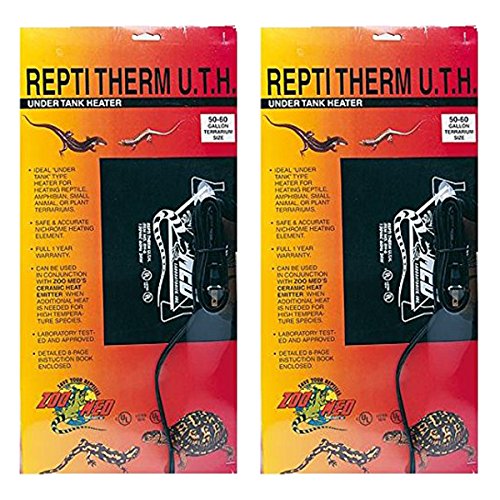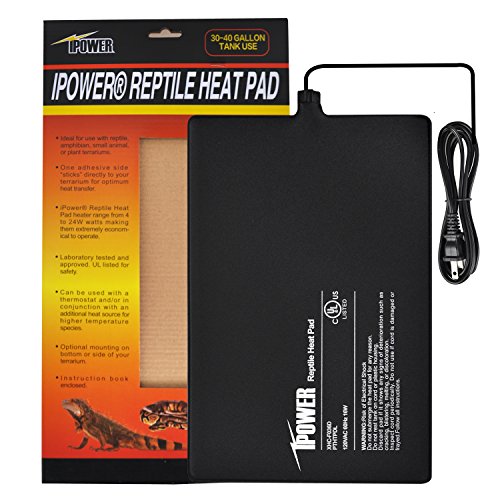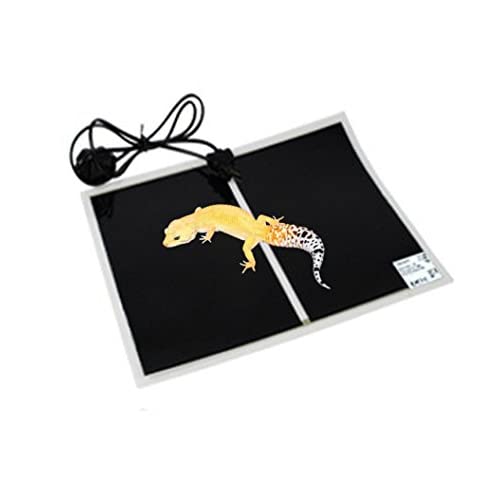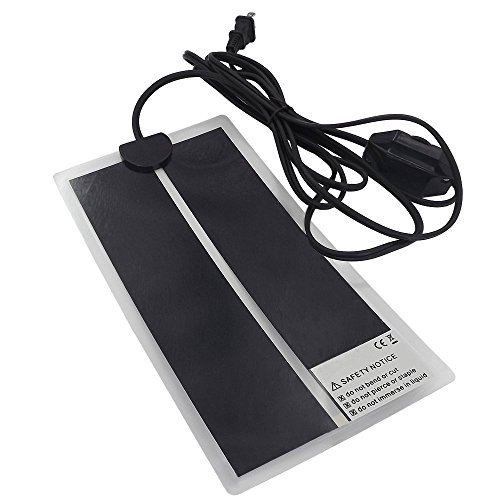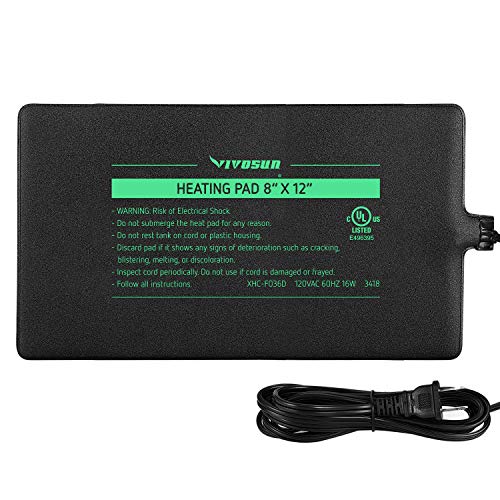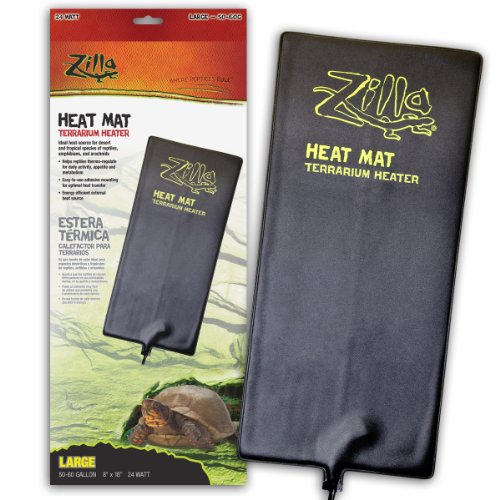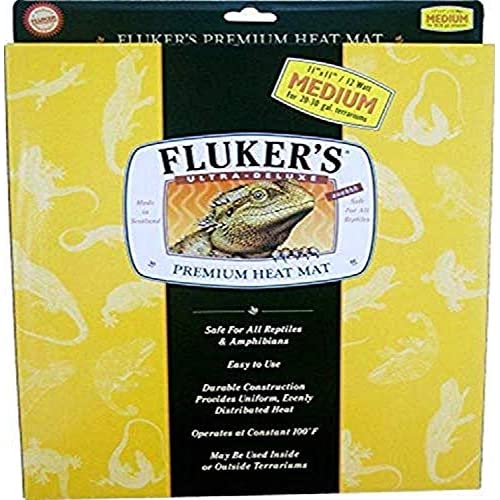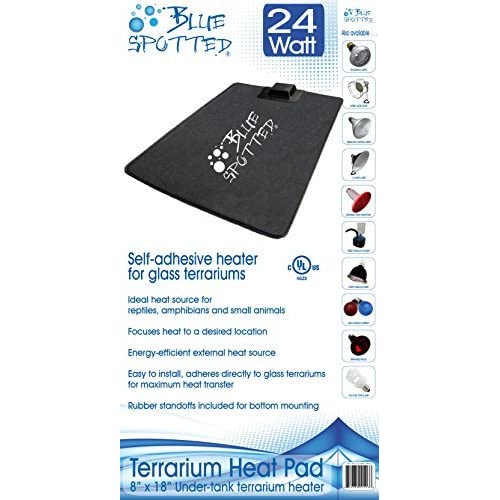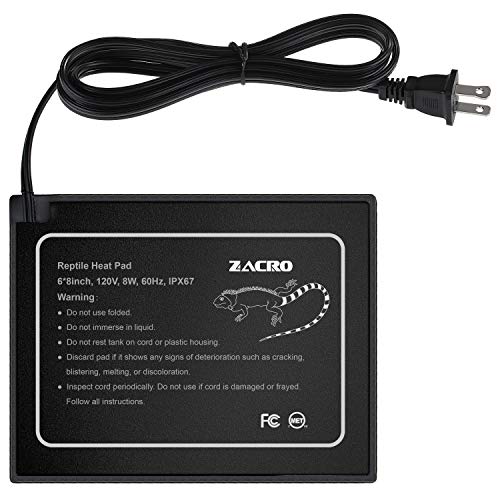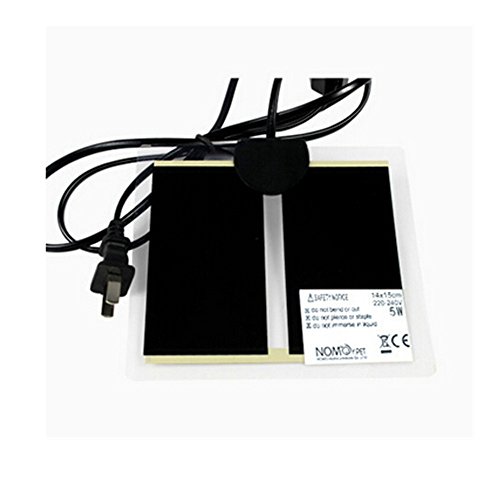Heat mats are an easy and economical way to keep your pet comfortable and healthy. When you use one of the best reptile heating pads, you can maintain a constant temperature inside the enclosure overnight. Plus, you can ensure that the daytime environment stays warm enough, too.
Although you can use a heating pad made for humans, this is far from the best option. Most reptile mats are designed to go underneath the glass aquarium to provide heat from the bottom up. You can find them in a variety of sizes and wattages. Moreover, some are compatible with rheostats, not just thermostats.
Under tank heating pads supplement a basking light for lizards like bearded dragons and snakes like ball pythons. They use less electricity than a heat lamp does. Just be sure to test your setup first to make sure it reaches the correct temperature.
Install and test the reptile heat mat
Install the pad underneath the tank. It may come with an adhesive, but you don’t have to install it with that if you don’t want to. Washing the tank is easier if there is no heating pad stuck permanently to the bottom. Of course, follow the manufacturer’s directions if you’re in doubt.
Next, it’s imperative to leave space between the bottom of the pad and the tabletop or surface where the tank rests. Some reptile heat mats come with spacers that allow excess heat to escape.
Finally, check the substrate inside the tank separating your pet from the glass. (Many pet owners place reptile carpet at the bottom so that their pet cannot burrow down to the bare glass and get burned.) Then monitor the temperature with a thermometer for a while before you allow your pet back inside. Check both the ambient air temperature in the enclosure and the surface temperature.
Pro tip for best results with a heating pad
For superior control over the environment, use a thermostat and/or rheostat. The thermostat features the ability to turn on and off a heating pad when things get too cold or too hot. On the other hand, a rheostat acts like a dimmer, increasing or decreasing the power to raise or lower the temperature.
How much electricity will a heating mat use?
If you have a 15 W reptile heating pad and you use it for 12 hours a day, the math looks like this:
15 watts divided by 1000 x 12 hours = 0.18 kilowatt/hours/day
Since the average cost of electricity across the United States is currently $0.12 per kilowatt hour, you can see that a heating pad is very cheap to use. A 15 W mat in use for 12 hours a day costs 2 cents per day. Or round the clock use is only 4 cents a day, or $1.20 a month.
What about heat tape?
Pro reptile keepers sometimes use heat tape or Flexwatt. This product was not made for heating reptile enclosures and it tends to get too hot for the animals.
What’s the advantage of a heating pad versus a ceramic heat emitter?
Besides the fact that ceramic heat emitters consume a lot more electricity than a heat mat, they also get extremely hot and can burn your skin if you touch them by accident.
What about a hot rock instead of a heat mat?
Hot rocks have a reputation for causing burns because pets lay directly on them. If you don’t control them with a rheostat instead of only plugging them into the wall, they can get too hot. And if the rocks sit upon damp substrate, they can crack.
Top 10 Reptile Heating Pads on Amazon 2021
By now you may be convinced that a reptile heating pad is the best choice for you and your pet. To help you shop for one, we selected the top reptile heat mats and reviewed them below. We hope our article helps you find exactly what you need.
#1 Zoo Med Repti Therm Under Tank Heater
Zoo Med is a trusted manufacturer of accessories for pet owners. It’s no surprise that their Repti Therm under tank heater has a UL/cUL certification for safety. It also comes with a one-year warranty.
You can purchase the under tank heater in a variety of sizes and wattages. It’s capable of running 24 hours a day to keep your reptile comfortable. It features a solid-state nichrome heating element and comes with an adhesive to stick it to the terrarium.
#2 iPower Reptile Heat Pad Under Tank Terrarium Heater
iPower’s reptile heat pad is UL-listed for safety and includes a one-year manufacturer’s warranty. It comes with 3M adhesive paper to secure it to a glass tank. Since it’s waterproof, it shouldn’t create an obstacle to cleaning the terrarium. Plus, the six-foot power cord provides some flexibility for placement.
#3 Vipe Reptile Heating Pad Heat Mat
This under heating mat is one of the best heating mats for the medium and large terrarium. It has many sizes for you to choose one that fits the tank size. This product can heat up quickly within 5 seconds and can be adjusted up to 50 degrees Celsius. It is water-resistant and also works very well in wet environments. It also does not cause difficulties for you during cleaning and maintenance.
#4 Windspeed US plug110V Under Tank Heating Pad
This heating mat is not the same size as other common heating mats. It is longer and has a narrower width. This size is suitable for small-sized tanks. Many customers even use this product to heat pets other than reptiles. It is also waterproof and heats up quickly. Warming temperature within the safe range.
#5 VIVOSUN 16W Under Tank Heater for Tropical and Temperate Reptiles
VIVOSUN’s 8 x 12” heating pad suits 30 to 40-gallon glass terrariums. It heats up to about 104°F so they recommend their own brand of thermostat to control it. Additionally, it comes with a three-year guarantee.
#6 Zilla Reptile Terrarium Heat Mats
Zilla’s terrarium heat mat is available in different sizes. Customers say that it seems well-insulated and provides plenty of heat. Some complain that the adhesive wasn’t effective.
#7 Fluker’s Heat Mat for Reptiles and Small Animals
Fluker’s heating pad, like all the rest, is recommended for use outside the enclosure only. But of course, you can place it underneath the tank or on the side. Mounting it on the side works better if you have lots of substrate or no way to ventilate underneath. It reaches 100°F. Users report the mats raise the temperature 15 to 20°F above ambient conditions in the room.
#8 Under Tank Heater By Blue Spotted, For Reptiles, Amphibians & Small Animals & Use with Glass Terrariums
Blue Spotted’s under tank heaters come in a variety of sizes. For example, the large one measures 8 x 18” and consumes 24 Watts. It’s UL-approved for electrical safety and comes with rubber standoffs to ensure proper ventilation of excess heat. One user commented that the mat reached 120°F.
#9 Zacro Reptile Heat Pad
This is one of the most durable reptile heating pad on this list. It is made from high-quality PVC, which can be flexibly folded. Therefore, it has a long life compared to other materials. This product provides stable temperature for reptiles and is very energy efficient. Smooth surface makes maintenance and cleaning easier. You also do not need to worry about the safety of this product.
#10 Giveme5 Upgrade US Plug 110V Reptile Heating Pad
This is also another effective working carpet that you should consider. It is suitable for small to medium sized tanks. It has the ability to automatically adjust the heat, making sure to keep pets warm without harming them. The installation has never been so easy when you only need to plug in the socket to boot the device. This reptile heating pad also ensures heat is evenly dispersed throughout the pad.
Recommended temperatures for reptiles
It’s likely that you already know what your pet requires. But if you’re still doing research to figure out what to buy, here are the recommended temperatures for a selection of reptile pets.
Ball python: daytime air temperature 82 to 86°F and nighttime 72 to 78°F
Boa: daytime basking air temperature 80 to 85°F
Blue tongue skink: basking air temperature 85 to 95°F and nighttime not below 65°F
Box turtle: ambient air 75 to 80°F on the warm side of the tank
Bearded dragon: daytime air temperature 85 to 95°F and nighttime 68 to 77°F
Chameleon: ambient air 75 to 77°F but no lower than 60°F at night
Corn snake: ambient 78-82°F
Crested gecko: ambient 72 to 82°F (therefore, you probably won’t need a heating pad unless it’s cold in your house)
Leopard gecko: ambient 77-85°F
Tegu: daytime ambient air 90 to 95°F
Conclusion
Perhaps the easiest and least expensive way to maintain warmth in your pet’s terrarium is to use an under tank heater. If you don’t have a glass tank, you’ll probably need to find a different solution.
Running a reptile heating pad only costs pennies a day. Moreover, it can keep your pet comfortable and healthy. To ensure the best possible situation, monitor the temperature inside the enclosure. For precise control, plug the heating mat into a thermostat or rheostat.
